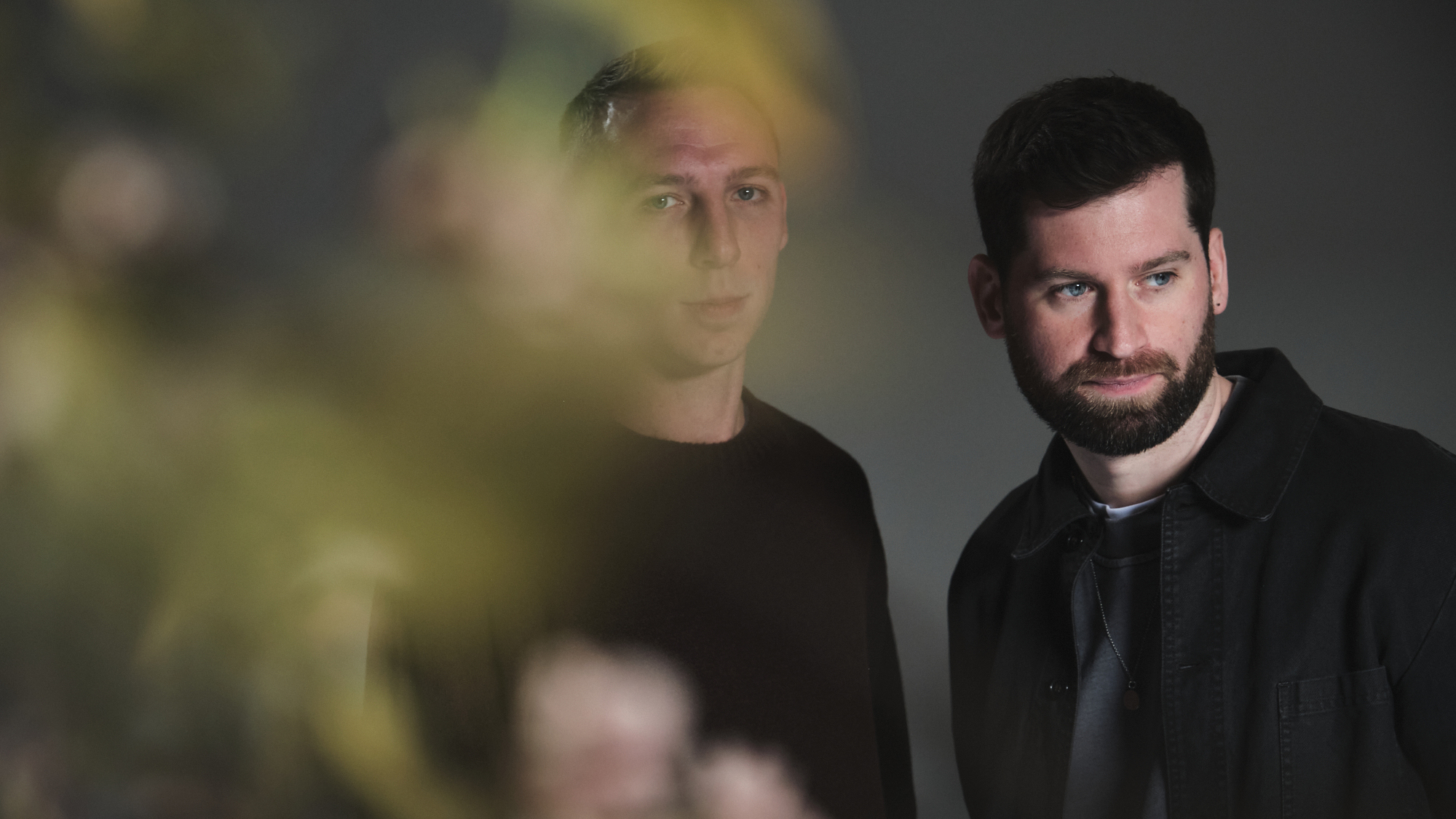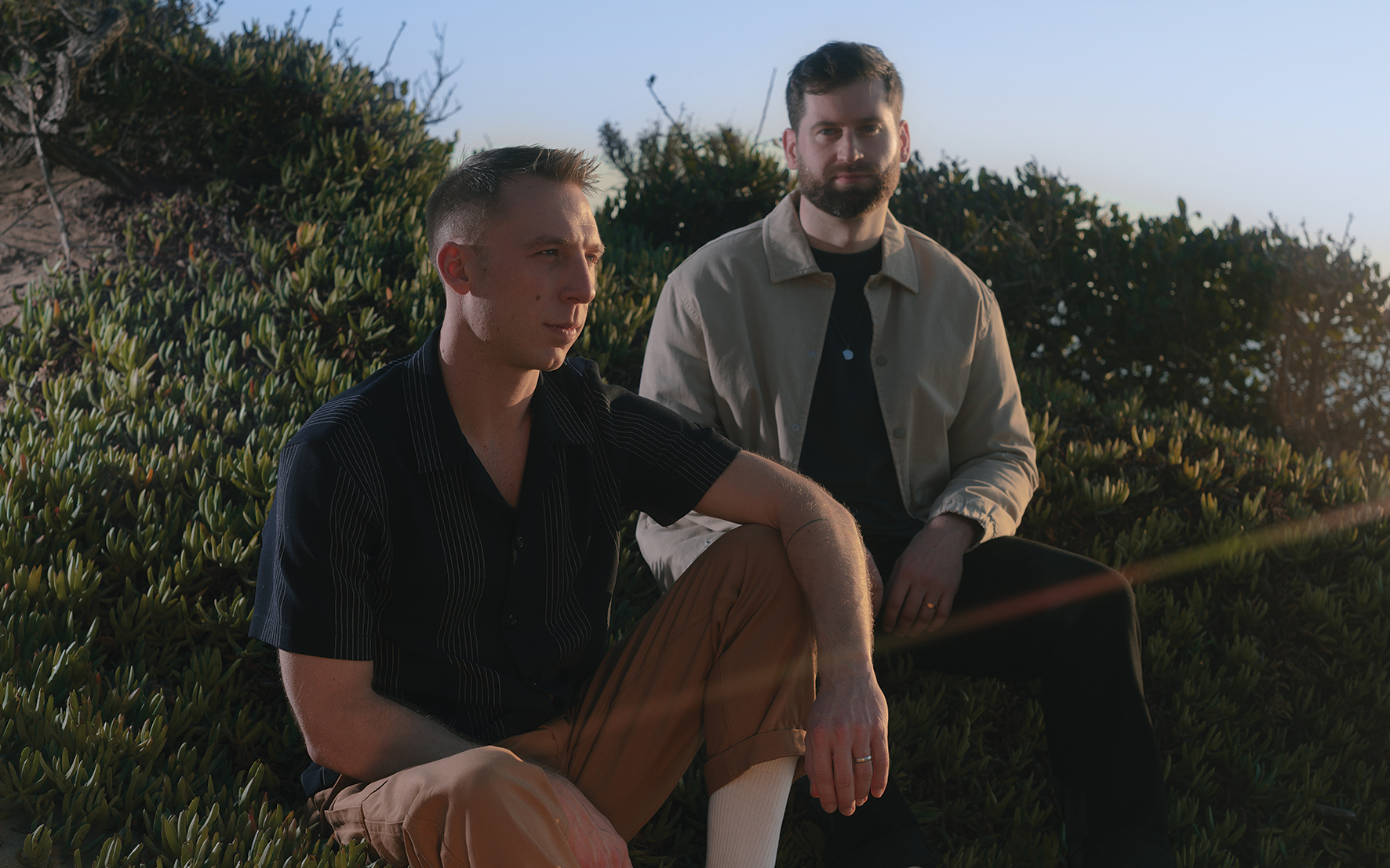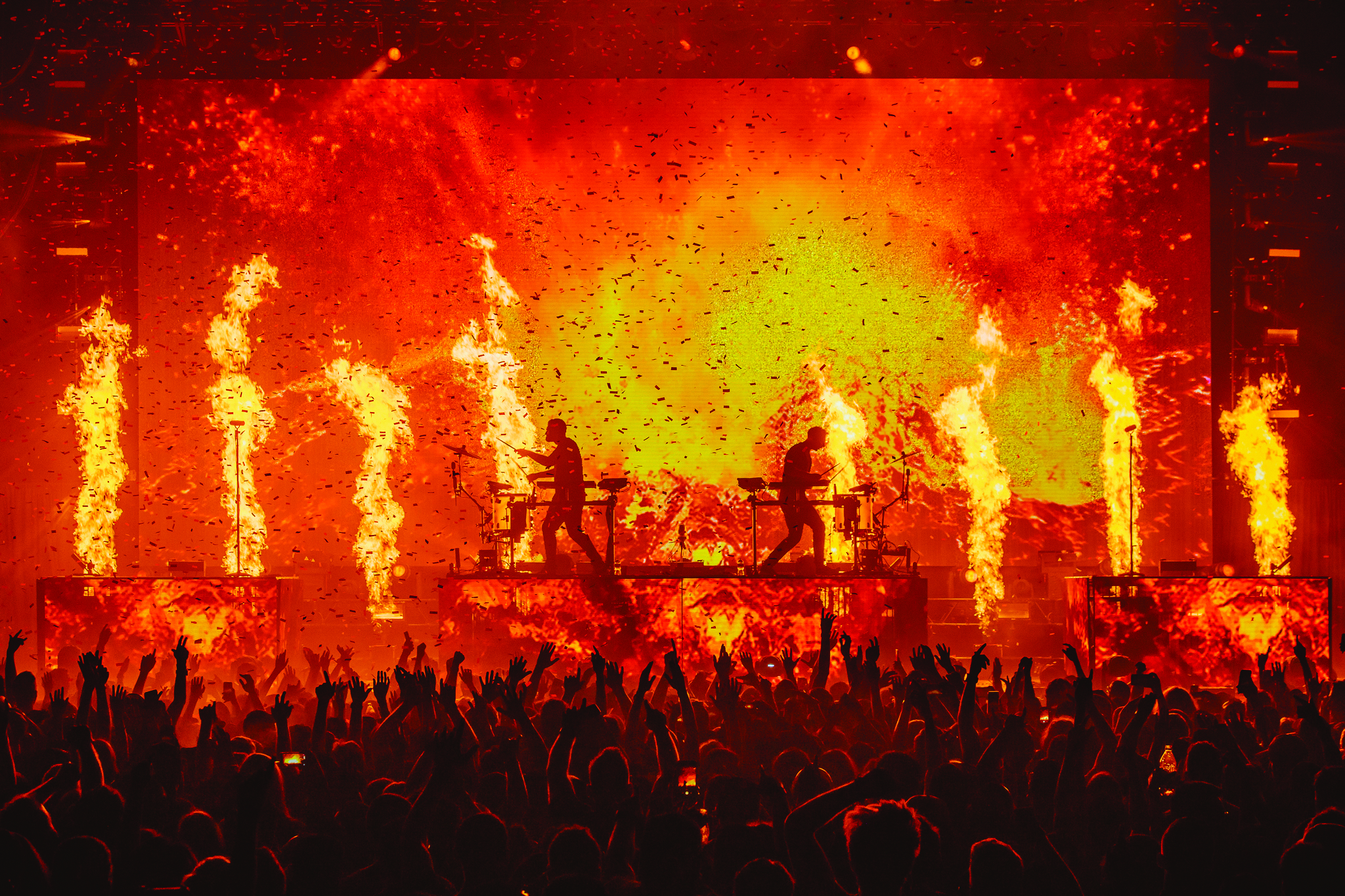ODESZA: "You can have all the gear in the world, but that doesn’t mean you’re going to write anything super special"
The Grammy-nominated duo return with the most epic-sounding album of their decade-long career

Grammy-nominated Odesza have risen meteorically since their downtempo debut album Summer’s Gone to become a staple of the electronic music scene with each release becoming increasingly ambitious.
Perhaps unsurprisingly, the impetus for their fourth LP The Last Goodbye hinged on the global pandemic, as the duo reflected on its emotional impact on close friends and family. Despite being Odesza’s most personal record to date, it takes an uplifting and celebratory tone. Throughout its conception, Harrison Mills and Clayton Knight focused on themes of connection and reminiscence, interweaving audio clips from home video footage.
With collaboration always at the forefront of their songwriting process, Icelandic multi-instrumentalist Ólafur Arnalds’ contribution underpinned the album’s creative direction, while vocal samples from ‘60s soul legend Bettye LaVette and ‘70s folk singer Stephen Ambrose cleverly intertwine past and future.

When you call an album The Last Goodbye, people are going to make obvious assumptions. Would you like to address that?
Harrison Mills: The title was absolutely a concern at first, but we’d played with lots of other names and they just felt like gimmicky versions of what we were really trying to say. It’s more of a thematic title for the record, so don’t worry, we are still a band.
Would you agree that the album has a more grandiose feel than your previous works?
Clayton Knight: I think that we’ve subconsciously tried to keep making things more epic and as we’ve learned to produce better and discover new tricks, the Odesza sound has taken on that form. We’re really drawn to music that has a big energy and try to create a substantial dynamic by incorporating intimate and big moments that fill the whole sound spectrum.
Get the MusicRadar Newsletter
Want all the hottest music and gear news, reviews, deals, features and more, direct to your inbox? Sign up here.
You interspersed the album with audio clips from various home video footage. Was that your way of paying homage to the emotion that everybody’s felt over the past couple of years or more?
HM: It was definitely that. A lot of this record, and probably most people’s records right now, were written in quarantine and that’s led to a lot of self-reflection. The hunger for doing live shows again, the importance of family and rebuilding your list of priorities in life is a thought process that a lot of people went through. For us, we chose a hopeful route based on that deeper connection with our families and loved ones. When we dove into ourselves and our past, we started finding all these things that we felt defined us in ways we hadn’t realised , and looking back over that video footage had an echo effect of the impact people have left on us.
The album pays homage to where we come from and the people who made us who we are today
CK: Leading up to this we’d been on the road for six or seven years straight, so the pandemic was the first time we actually got to do all of that unpacking. Life stood still for a minute and we started to reconnect with family and friends who we hadn’t seen for a long time. So the album pays homage to where we come from and the people who made us who we are today.
Did the situation interfere with your creative process in terms of how you’d typically work together?
CK: We usually like to take some time off but we’ve never had this much time off. When we wrote the last album, A Moment Apart, we had a couple of months here and there to fine tune it, but most of it was made on tour buses and different studios on the road. With The Last Goodbye, a lot of it was made fresh. It took a long time as we almost had to learn how to write again and unpack what the new Odesza direction would be, so the process was very trial and error.
HM: Being stuck inside and not knowing the future of the world was definitely a bit bleak and, initially, led to a lack of motivation. Even though it was all a bit scary for a few months, it was exciting to have time away from being constantly pulled in different directions - then we started looking for a light at the end of the tunnel and wanted the music to feel important again.
You have so many collaborations on the album. We guess you’re in a wonderful position where you can pick and choose?
CK: We had some initial ideas about people we wanted to reach out to, but once you start working with them there are always surprises because you often try something that you didn’t initially think would fit but becomes really unique. So there was lot of outreach to see who was going to fit with our vibe and the best combinations came from people who were familiar with our music yet live in a slightly different world. At that point, we’re making this new world together and pushing and pulling each other in new directions, so we tried to capture and lean towards that as much as possible.
HM: When artists are well-established it can actually be pretty difficult to do something different. What excites us about music is trying something new, but established artists often feel like they’re supposed to stay in a lane or they expect a certain genre or sound.

Did the song inform the collaborations or did you know ahead of time some of the people you wanted to work with?
HM: We just made tons of different music and gathered a few ideas that we thought would be great for a vocal track. From there it’s actually a fun game to go online and search out artists who we think might fit with the different things that we make.
CK: The demos are usually really rough, consisting of some basic chord progressions and a few melodies, but once we get into a vibe with a vocalist and they’ve got a top line and a melody together, we’ll go back and re-produce everything around their vocal again. We feel that customizing the whole thing to fit the vocalist makes the track more cohesive, but it’s a delicate process because when you’re always remixing your work you can get lost when you start opening a bunch of different doors.
Do you have a little black book of artists that you’ve been wanting to work with over the years?
HM: It’s quite a list [laughs], but it’s not a case of we’re Odesza, we want to work with you and it’s an immediate goer. Quite often, people are like, “who are you?”
We like taking some timeless, incredible track and putting a modern twist on it that brings it into today’s electronic music scene
CK: I wish I had my Spotify open, but off the top of my head there are a lot of producers we’d love to work with. The Panda Bear sound is something we’ve always wanted to do but never been able to explore, but we also like taking stuff from older recordings. We like taking some timeless, incredible track and putting a modern twist on it that brings it into today’s electronic music scene.
Do you typically work together from the same location?
CK: We’ve got a studio set up from where our label runs out of and that’s got all the synth gear we use, and then we’ve replicated that setup in each of our homes. What we tend to do is meet up for a couple of hours each day, compare notes and then split off to sit with the tracks and tweak and add what we can before repeating that process until we get closer to what we want. During those early stages we’ll often tell each other that if we’re really feeling something we should go ahead and run with it, and then if one of us gets stuck we discuss how we can move forward. The last 15-20% is basically about us sitting in the same room, muting stuff and refining everything.
When you say that your home studios are replications of your master studio, does that apply to both hardware and software tools?
CK: A lot of it applies to hardware and what we have is pretty identical. There’ s a couple of toys at the bigger studio that we don’t share, but once we decided that we wanted to work in this way we felt that we had to be hands-on with the same gear in our own personal spaces.
Do you feel that you have an ever-increasing mastery over gear or is there still a bit of mystery there?
HM: What’s exciting about music is that you’re never going to be the best you can be at it. It’s a constant learning experience, so there are always new techniques to try and new synths to learn, and because you never master it it’s always interesting.
Is it important to retain a sense naivety about gear to keep you excited and motivated?
CK: That’s something we’ve really learned. You can have all the gear in the world, but that doesn’t mean you’re going to write anything super special. At the beginning of the writing process, we try to keep things as simple as possible because it makes you focus more on the music itself rather than, for example, getting lost in the weeds of making a patch. That’s a really fun and important part of the process, but before you know it you’ve lost eight hours tweaking and haven’t written much, so it’s a fine balance between accessing gear and mitigating that access so that you don’t go too far down the rabbit-hole.
HM: The truth is you don’t need any of it really. You can use Ableton stock sounds and make a great track, so gear doesn’t make the song.
Would you say that you have certain skills that are complementary to each other?
CK: I’d definitely say that. I lean a little more towards a melodic setting and Harrison definitely deals with a lot of the percussion and drum work stuff. There are caveats to that of course, but as we’ve got better at writing together I know the avenues he’ll lean into and will usually leave that door open a little and let him run with it. Obviously, that works both ways.
If there are disagreements, what will they tend to focus on and how do the two of you move past them?
HM: Every duo’s going to have issues. It’s like having a roommate; they’re around ALL the time [laughs], but I think that head-butting is really healthy.
The Sequential OB-6 is always right there, and we use the Novation Peak a lot and the Korg Minilogue
As Clay said earlier, we both have things that we know the other likes, but what’s fun is to try to convince each other to like something that they don’t have a preference for by working it into a song in a way that makes sense. So we find that it’s really fun to try to impress each other at the demo stage by pushing things a certain direction.
So what hardware tools are you most often reaching for in the studio these days?
CK: The Sequential OB-6 is always right there, and we use the Novation Peak a lot and the Korg Minilogue. Later in the album-writing process, we used the Black Corporation KIJIMI synth, which has both a retro and modern vibe depending on how far you want to push it.
What fascinates you about the KIJIMI?
CK: The routing on it’s pretty intense and it has this incredible aftertouch effect that can get really crazy and sounds like nothing else. As soon as you load it up and put some reverb on it, you basically have the Blade Runner soundtrack right there in a box. So that’s our go-to for epic sweeps and big brassy synths, and then the Deckard’s Dream MK2, which is an amazing piece of hardware. It’s mellower but has some beautiful pads. Inside the box, we use a lot of Native Instruments stuff and like to chop it up with Maschine. There’s also some guitars layered in there, and strings when we can find someone who can notate everything for us.
The album has plenty of orchestral-sounding elements. How were those developed?
CK: We write a lot of it in the box so we have it in a digital format and then we’ll have someone lay down the real stuff. From there, it’s usually a combination of two things being put together. On the “Light of Day” track, which features Ólafur Arnalds, he wrote the string progression and then we layered a couple of additional pieces in there, but a lot of it was about him using a combination of software and actual recordings.
How did the collaboration with Ólafur come together then?
HM: We met Ólafur in San Francisco quite some time ago when he was playing with his other group, Kiasmos, and ended up hanging out together. When the pandemic hit we were looking for inspiration and sent him a message.
With every album, we tend to make the first or the last song first
He sent over a bunch of little loops and one of them was a chord progression that instantly inspired us, so we all started working off of that. “Light of Day” was actually one of the first songs we made for the record and it ended up being a bit of a guiding light. With every album, we tend to make the first or the last song first and use that as a tent pole to decide where we’re going to take everything else.
Whose vocal is on that track?
HM: It’s a musician from the early ‘70s called Stephen Ambrose. It’s a bit of an insane story, but we like to dig for records all the time and came across his album called Gypsy Moth. I think it was the only record he put out because he ended up becoming a recording engineer and developing the very first in-ear monitor for musicians.
We ended up meeting him and his story is incredible because he’s had quite an influence on the industry. It’s been really fulfilling to get to know a lot of the people from the ‘60s and ‘70s that we’ve sampled because they’re so open-minded and cool.
Likewise, the title track features ‘60s soul singer Bettye LaVette. Presumably, that was also written around her vocal sample?
HM: Originally, we had an instrumental that we thought had potential to be something good but couldn’t quite figure out why the verses wouldn’t lead to the big moment in an interesting way. We wanted to find a layer that would add a new element and were digging through records when we came across Bettye LaVette’s “Let Me Down Easy”.
At first, we had no thoughts about sampling it – we just thought it was a beautiful and inspiring track, but we had it on our computer and noticed that it was in a similar key to the instrumental we’d made. That instantly connected with us and seemed to solidify the track, so we started adding other elements and gluing everything together from that piece of inspiration…
Odesza's The Last Goodbye is out now via Ninja Tune.











